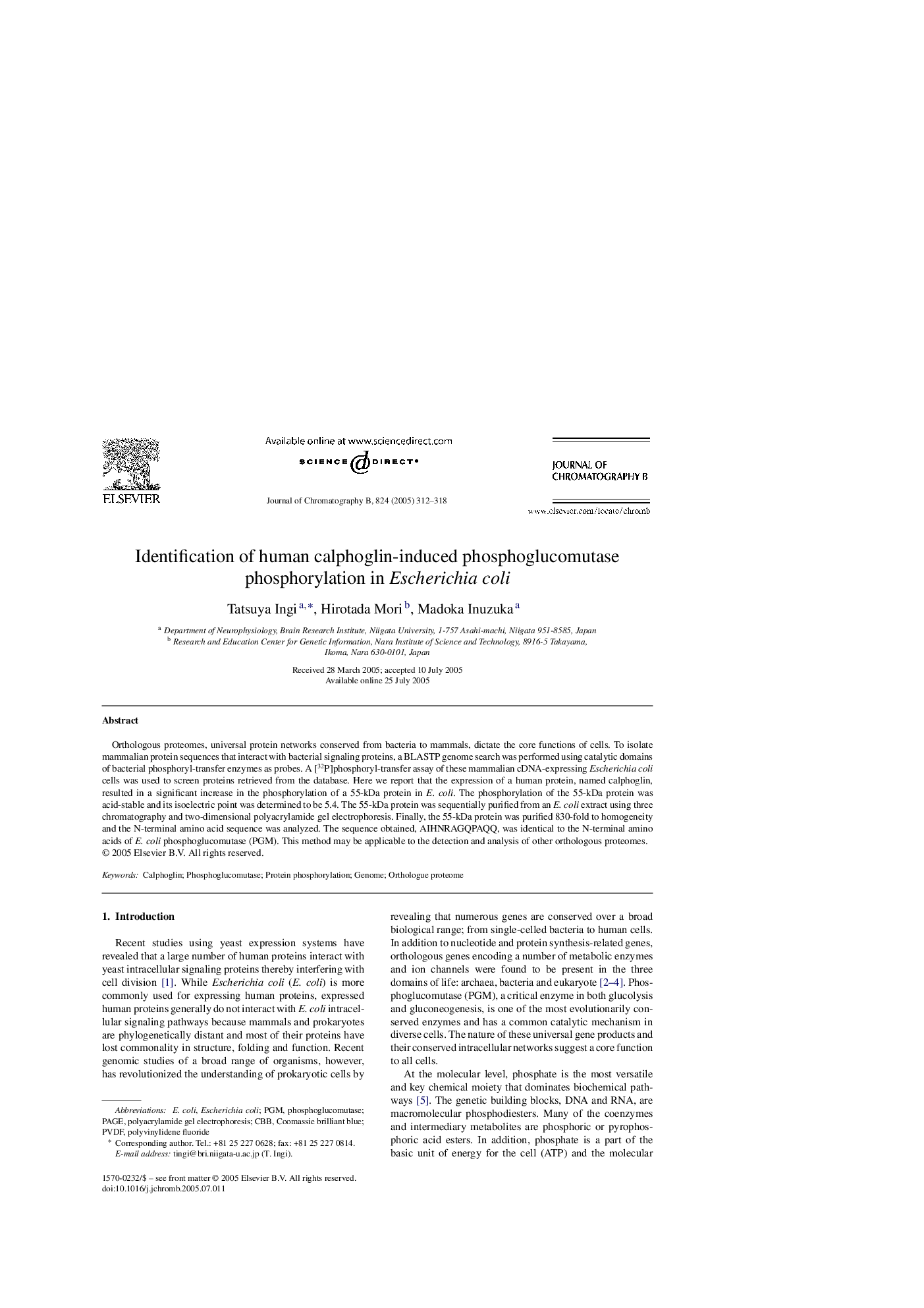| Article ID | Journal | Published Year | Pages | File Type |
|---|---|---|---|---|
| 9753262 | Journal of Chromatography B | 2005 | 7 Pages |
Abstract
Orthologous proteomes, universal protein networks conserved from bacteria to mammals, dictate the core functions of cells. To isolate mammalian protein sequences that interact with bacterial signaling proteins, a BLASTP genome search was performed using catalytic domains of bacterial phosphoryl-transfer enzymes as probes. A [32P]phosphoryl-transfer assay of these mammalian cDNA-expressing Escherichia coli cells was used to screen proteins retrieved from the database. Here we report that the expression of a human protein, named calphoglin, resulted in a significant increase in the phosphorylation of a 55-kDa protein in E. coli. The phosphorylation of the 55-kDa protein was acid-stable and its isoelectric point was determined to be 5.4. The 55-kDa protein was sequentially purified from an E. coli extract using three chromatography and two-dimensional polyacrylamide gel electrophoresis. Finally, the 55-kDa protein was purified 830-fold to homogeneity and the N-terminal amino acid sequence was analyzed. The sequence obtained, AIHNRAGQPAQQ, was identical to the N-terminal amino acids of E. coli phosphoglucomutase (PGM). This method may be applicable to the detection and analysis of other orthologous proteomes.
Keywords
Related Topics
Physical Sciences and Engineering
Chemistry
Analytical Chemistry
Authors
Tatsuya Ingi, Hirotada Mori, Madoka Inuzuka,
